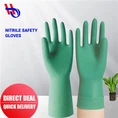Latex Gloves
What is Latex Gloves
Latex gloves, as the name suggests, are gloves made from latex. They're most commonly used in hospitals and similar environments, but can also be found in a range of different environments, including garages and food service.
Advantages of Latex Gloves
Approved for Medical Use: As latex gloves provide excellent barrier protection from bloodborne pathogens and other environmental contaminants, they are approved for medical use. They are available in powdered and powder-free options.
High Resistance to Chemicals: Latex gloves form chemical resistance against most acids, bases, chlorine, iodine and formaldehyde. Puncture Resistance: Unlike vinyl gloves, latex gloves are puncture resistant and used widely in the foodservice industry. Heavy-duty, premium-grade industrial latex offers twice the thickness as standard latex gloves.
Industrial Applications: The industrial-grade latex gloves have gained popularity in automotive and manufacturing, foodservice and food processing and janitorial and sanitation. They are suitable for short duration industrial applications.
Best Fit and Feel: The industrial-grade latex gloves have gained popularity in automotive and manufacturing, foodservice and food processing and janitorial and sanitation. They are suitable for short duration industrial applications.
High Elasticity: Latex gloves offer high elasticity than nitrile gloves and reduce hand fatigue. Durable: Unlike vinyl gloves, latex gloves are durable as they are made from very strong and durable materials.
Versatile Application: Latex gloves are used in different industries, including healthcare, hospitality, food service, janitorial service, and more.
Why Choose US
Our factory
Beijing Huateng Rubber and Plastic Latex Products Co., Ltd. was established in 1958. The company has excellent performance in China's latex impregnation products. The registered capital of the Company is 120 million yuan, and the value of fixed assets is 258 million yuan. The annual turnover exceeds 800 million yuan.
Our Product
We mainly develop nitrile protective gloves and neoprene protective gloves. At the same time, our company provides different kinds of work gloves, protective gloves and waterproof boots to the domestic and foreign markets.
Our certificate
The company has passed ISO9001: 2015 quality management system and ISO14001 environmental management system certification. Latex gloves have passed EU CE certification
Production equipment
It has strong scientific research and development ability and technical testing means, and the factory has complete industrial sanitation, labor protection and fire protection facilities that meet the environmental protection standards.
Powerful industrial production utilities
Power supply capacity is 4250KVA, and water supply capacity is 240t/h circulating water capacity. 300t/h, heating capacity 32t/h, the water supply and drainage facilities in the plant area are complete and connected with the municipal pipe network.
How to Choose the Right Pair of Latex Gloves

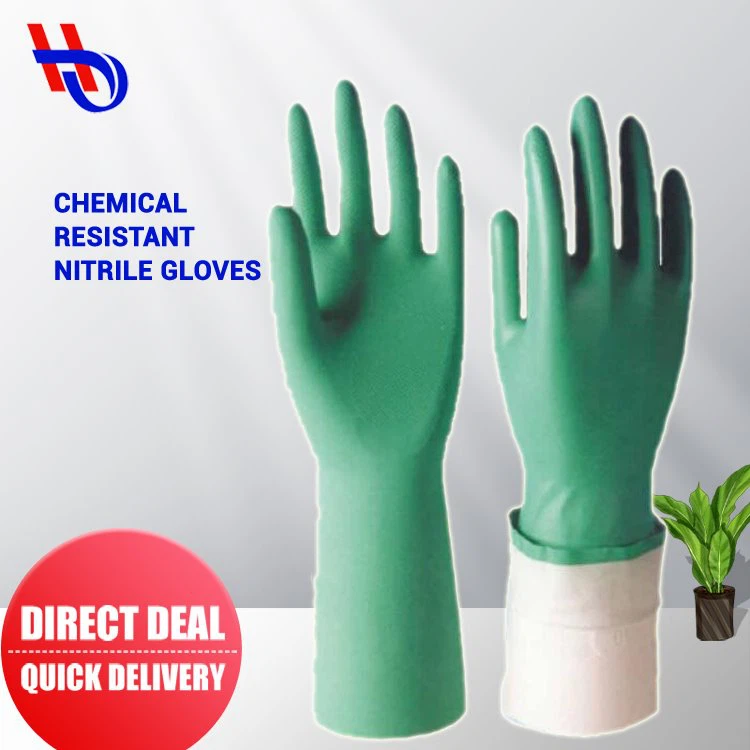

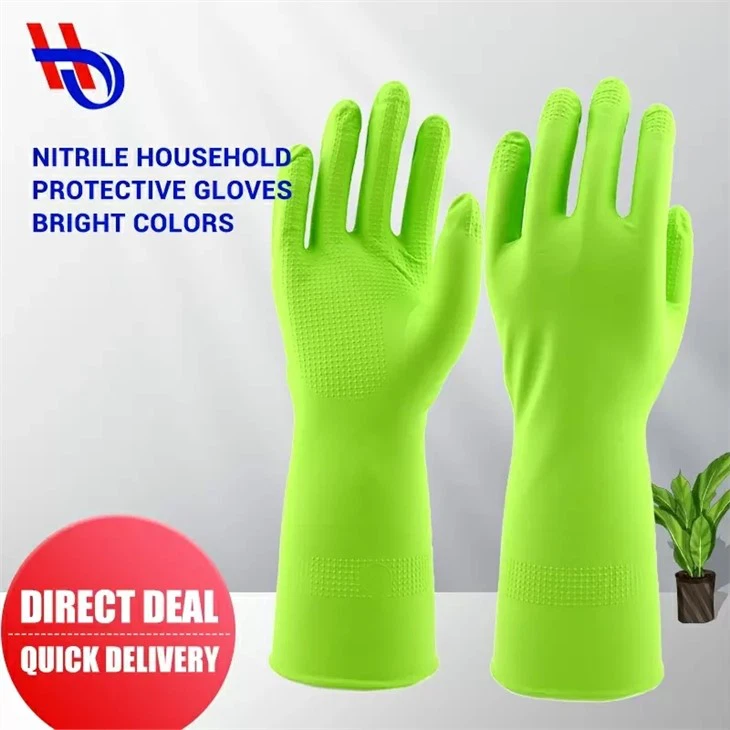
Choose Based on Intended Use
First and foremost, you should choose latex gloves based on what their intended use will be. You can typically divide latex glove uses into two categories: surgery or examination.
On occasion, you may also have the option of choosing latex gloves that provide protection for uses involving chemo-therapies.
Typically, however, examination gloves are meant to prevent exposure to a patient's bodily fluids or blood. In the case of surgeries, you need latex gloves that will provide even greater protection from exposure to blood and bodily fluids.
Surgical gloves may cost slightly more, but they are made differently to provide an added barrier of protection for healthcare workers.
Don't Stress Brand
Generally speaking, you shouldn't choose your latex gloves based purely on their brand. While brands vary and some may be known for offering better quality, the brand shouldn't be the only thing you consider when choosing.
The most important aspect of your choice in latex gloves is the task they will be used for and the type of patient being treated.
At the end of the day, it will do you know good to have a fancy brand and expensive glove if the glove itself doesn't meet the needs of the task at hand. Quality and purpose are paramount.
Consider Fit
For ultimate protection, (and comfort), your latex glove purchase should also be influenced by fit. Everyone on your healthcare team has different sized and shaped hands. This can make finding the right gloves tricky.
It can be helpful to ask yourself how important tactility and sensitivity is to the task. For cleaning or general hygiene, these factors aren't important. But, for hospital and examination settings, they are pivotal.
Latex and nitrile gloves tend to fight more tightly and provide greater elasticity. On the other hand, vinyl gloves are looser which may be more comfortable but less protective in a surgical setting.
Typically, for maximum protection, you want gloves that fit snuggly so as not to allow any blood or fluids to seep inside.
One good test of fit is to place the glove on your hands and extend your fingers straight. If the material stretches when you do this, the glove is considered to be too small.
Consider Durability and Glove Strength
When you're selecting the right pair of gloves for your office or project, you need to be aware of how durable they are. Depending on how you're using them, gloves can be subject to ripping, puncture, or stretching.
You don't want to be in the middle of a procedure or surgery and find that your gloves have a hole in them.
If you use a lot of sharp instruments in your medical work, you also want to think about how well the glove stands up to accidental punctures.
Fortunately, latex gloves are better at resisting punctures and ripping than vinyl. They tend to be more durable and wear longer. However, this obviously cannot be the only consideration when choosing the right pair of gloves as allergies and intended use may alter your choice.
Consider Glove Features
Before you can choose the best set of latex gloves, you need to be aware of the different features latex gloves can offer. Some gloves are powdered or non-powdered. Others are sterile or non-sterile.
The powder in powdered gloves is typically cornstarch. This is because cornstarch is non-allergenic. The powdered inside these latex gloves makes them easier to slip on and off.
However, if you are treating a patient with open wounds or abrasions, the cornstarch powder can get inside and cause pain or irritation.
Interestingly, some medical professionals have been known to develop latex allergies after wearing powdered gloves for too long.
Sterile latex gloves are a good alternative option for powdered that are not known to cause allergies later on. They are made with chlorinated latex and thus do not cause allergies down the line.
If you want to get really fancy with your gloves and aren't worried about materials getting into patient wounds, then some latex gloves are made with aloe or oatmeal. These are luxurious for the caregiver and provide added moisture to keep hands feeling smooth.
Consider Alternatives for Latex Allergies
The last thing you need when treating a patient is to cause an allergic reaction to exacerbate their existing condition. While less than 1% of people have latex allergies, some patients, and even medical professionals do.
When this is the case, you need a quality substitute glove available.
Alternatives to latex can include vinyl, nitrile, or synthetic gloves. It will help you narrow the choices for latex-alternatives by knowing what task the gloves will be worn for.
Once you have an idea of what types of procedures or medical tasks the gloves will be worn during, you can more easily pick between vinyl, nitrile, or synthetic.
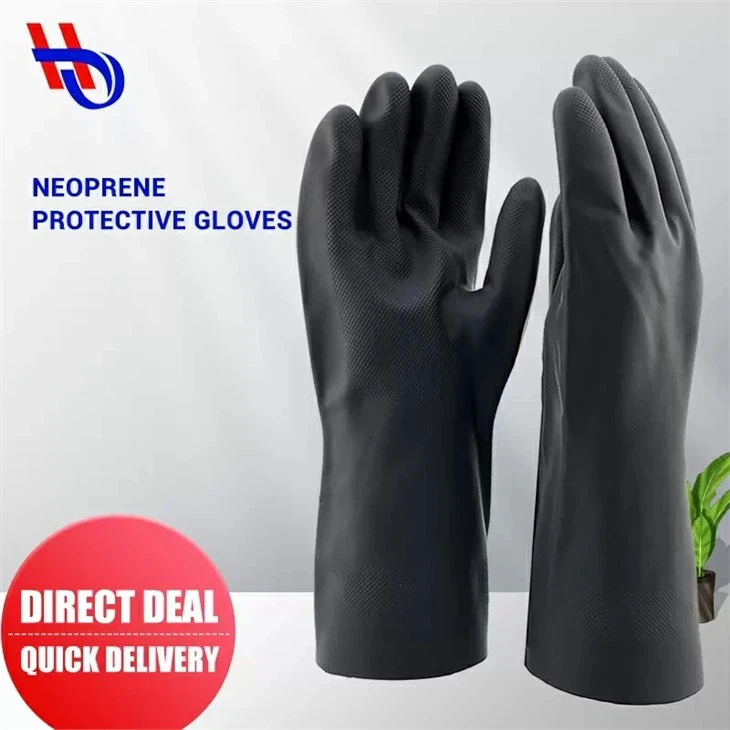
Latex glove production uses ceramic or aluminum hand-shaped molds called formers, that are first extensively washed in hot water and chlorine to ensure there is no residue from previous batches. The formers, suspended on a continuously moving chain, are then dipped into a mixture of calcium nitrate solution and calcium carbonate, and the dried. After the drying process, the molds are dipped into the latex compound. The duration of the dip determines the mil thickness of the gloves. The freshly molded gloves are next leached in a mixture of hot water and chlorine, removing residual latex proteins and chemicals to help reduce the severity of any allergic reactions to latex.
The gloves are then dried and cured. After drying, the gloves are rinsed again to leach out more latex proteins, then the cuffs are beaded, or rolled, to make them easier to put and off. Pneumatic air jets then strip the finished gloves from the formers, or workers will remove them by hand. The molds are given another thorough chemical wash and rinse, and then the process repeats.
How to Choose the Right Pair of Latex Gloves
Choose Based on Intended Use
First and foremost, you should choose latex gloves based on what their intended use will be. You can typically divide latex glove uses into two categories: surgery or examination.
On occasion, you may also have the option of choosing latex gloves that provide protection for uses involving chemo-therapies.
Typically, however, examination gloves are meant to prevent exposure to a patient's bodily fluids or blood. In the case of surgeries, you need latex gloves that will provide even greater protection from exposure to blood and bodily fluids.
Surgical gloves may cost slightly more, but they are made differently to provide an added barrier of protection for healthcare workers.
Don't Stress Brand
Generally speaking, you shouldn't choose your latex gloves based purely on their brand. While brands vary and some may be known for offering better quality, the brand shouldn't be the only thing you consider when choosing.
The most important aspect of your choice in latex gloves is the task they will be used for and the type of patient being treated.
At the end of the day, it will do you know good to have a fancy brand and expensive glove if the glove itself doesn't meet the needs of the task at hand. Quality and purpose are paramount.
Consider Fit
For ultimate protection, (and comfort), your latex glove purchase should also be influenced by fit. Everyone on your healthcare team has different sized and shaped hands. This can make finding the right gloves tricky.
It can be helpful to ask yourself how important tactility and sensitivity is to the task. For cleaning or general hygiene, these factors aren't important. But, for hospital and examination settings, they are pivotal.
Latex and nitrile gloves tend to fight more tightly and provide greater elasticity. On the other hand, vinyl gloves are looser which may be more comfortable but less protective in a surgical setting.
Typically, for maximum protection, you want gloves that fit snuggly so as not to allow any blood or fluids to seep inside.
One good test of fit is to place the glove on your hands and extend your fingers straight. If the material stretches when you do this, the glove is considered to be too small.
Consider Durability and Glove Strength
When you're selecting the right pair of gloves for your office or project, you need to be aware of how durable they are. Depending on how you're using them, gloves can be subject to ripping, puncture, or stretching.
You don't want to be in the middle of a procedure or surgery and find that your gloves have a hole in them.
If you use a lot of sharp instruments in your medical work, you also want to think about how well the glove stands up to accidental punctures.
Fortunately, latex gloves are better at resisting punctures and ripping than vinyl. They tend to be more durable and wear longer. However, this obviously cannot be the only consideration when choosing the right pair of gloves as allergies and intended use may alter your choice.
Consider Glove Features
Before you can choose the best set of latex gloves, you need to be aware of the different features latex gloves can offer. Some gloves are powdered or non-powdered. Others are sterile or non-sterile.
The powder in powdered gloves is typically cornstarch. This is because cornstarch is non-allergenic. The powdered inside these latex gloves makes them easier to slip on and off.
However, if you are treating a patient with open wounds or abrasions, the cornstarch powder can get inside and cause pain or irritation.
Interestingly, some medical professionals have been known to develop latex allergies after wearing powdered gloves for too long.
Sterile latex gloves are a good alternative option for powdered that are not known to cause allergies later on. They are made with chlorinated latex and thus do not cause allergies down the line.
If you want to get really fancy with your gloves and aren't worried about materials getting into patient wounds, then some latex gloves are made with aloe or oatmeal. These are luxurious for the caregiver and provide added moisture to keep hands feeling smooth.
Consider Alternatives for Latex Allergies
The last thing you need when treating a patient is to cause an allergic reaction to exacerbate their existing condition. While less than 1% of people have latex allergies, some patients, and even medical professionals do.
When this is the case, you need a quality substitute glove available.
Alternatives to latex can include vinyl, nitrile, or synthetic gloves. It will help you narrow the choices for latex-alternatives by knowing what task the gloves will be worn for.
Once you have an idea of what types of procedures or medical tasks the gloves will be worn during, you can more easily pick between vinyl, nitrile, or synthetic.
Latex glove production uses ceramic or aluminum hand-shaped molds called formers, that are first extensively washed in hot water and chlorine to ensure there is no residue from previous batches. The formers, suspended on a continuously moving chain, are then dipped into a mixture of calcium nitrate solution and calcium carbonate, and the dried. After the drying process, the molds are dipped into the latex compound. The duration of the dip determines the mil thickness of the gloves. The freshly molded gloves are next leached in a mixture of hot water and chlorine, removing residual latex proteins and chemicals to help reduce the severity of any allergic reactions to latex.
The gloves are then dried and cured. After drying, the gloves are rinsed again to leach out more latex proteins, then the cuffs are beaded, or rolled, to make them easier to put and off. Pneumatic air jets then strip the finished gloves from the formers, or workers will remove them by hand. The molds are given another thorough chemical wash and rinse, and then the process repeats.
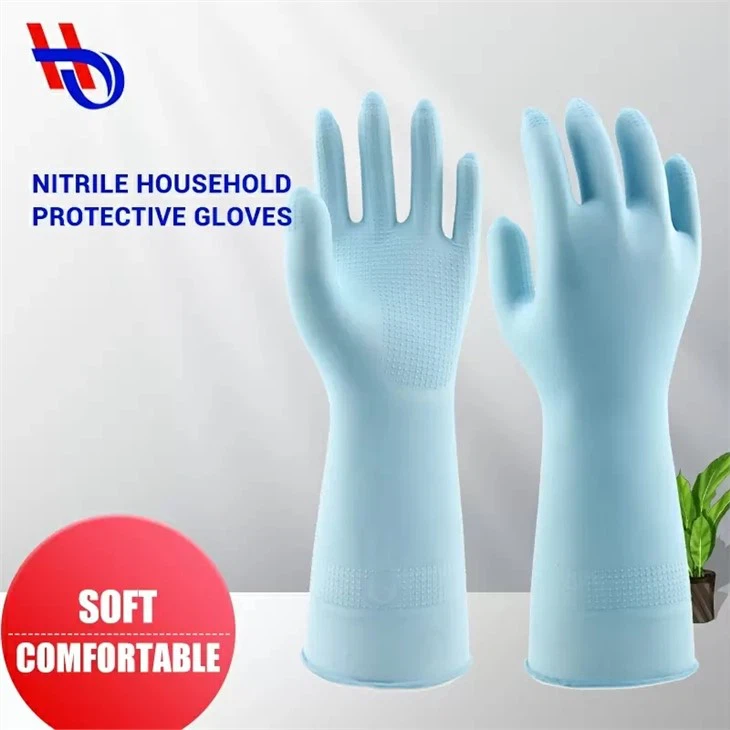
Change The Oil In Your Car
If you're used to changing your own oil, you know that it can be a messy business. Rubber gloves can help prevent oil from getting all over your hands while doing this messy job, especially if you have sensitive skin. Latex gloves can help keep your hands clean while keeping your skin safe from the harsh chemicals in the oil. Using cloth gloves can get stained with oil, making it harder to clean your hands when you're done.
Mix paint
If you're painting a room in your home, you'll probably want to wear gloves to protect your hands from the paint. Latex gloves will prevent your hands from getting stained with paint while keeping your hands safe from the chemicals in the paint. You can also use latex gloves to clean up paint spills.
Help you conquer your fear of creepy crawlies
If you're afraid of bugs, you might not want to handle them with your bare hands. Latex gloves can help protect your hands while keeping the bugs at bay. This is especially helpful when trying to catch bugs to get rid of them.
Help you work in the garden
If you grow vegetables, fruit, or herbs, you know that gardening can get very messy. Latex gloves protect your hands from dirt and splinters while keeping them clean, so you don't get your hands dirty while gardening. You can also use gloves to clean up garden debris, like leaves, pests, and weeds. If you have plants that need to be repotted, you can use latex gloves to protect your hands from the dirt and soil on the roots. Gloves can also be used to protect your hands if you have plants that are poisonous or have prickly leaves.
Help you clean up after pets
If you have a pet that makes a mess, latex gloves can help protect your hands while you clean it up. Latex gloves can protect your hands from teeth and claws when you clean them and any mess your pet might make. You can also use latex gloves to protect your hands while cleaning the litter box or giving your pet a bath. If you have a pet bird, you can use latex gloves to keep the bird's droppings off your hands while cleaning its cage. Latex gloves can also protect your hands if you need to change a sick or injured pet's bandages.
Help with food preparation and cooking
Latex gloves protect your hands from germs or bacteria on raw meat or other foods. They can also protect your hands while you're slicing or chopping food. If you're cleaning dishes for a sick friend or family member, you can use latex gloves to protect your hands while doing these tasks, where you may encounter risks without gloves. If you have a cut or open wound on your hands, gloves can help protect the food from getting contaminated.
Assist with messy household repairs
If you're doing any repairs around the house that require you to use messy materials, gloves can protect your hands while keeping them clean. You can also use gloves while cleaning up spilled or messy materials, like when dealing with a leaky pipe or fixing a plumbing issue. If you're doing interior wall repairs that involve messy materials, you can use latex gloves to protect your hands from getting messy.
Precautions for Daily Use of Latex Gloves
Affective touch dermatitis
This condition is mostly common and usually manifests itself as red, itchy, dry and cracked skin in the hands. It is caused by washing hands excessively with soap or detergent while not drying the thoroughly, resulting in the gloves impermeable.
Prevention and treatments
Be sure to rinse off the detergent and dry your hands before wearing gloves; and if it were dry gloves, then there should not be too much talcum powder inside the gloves. Once the symptoms of affective dermatitis appear, do not scratch and apply antipruritics.
Allergic touch dermatitis
It is characterized by itchy, dry and cracked skin on the hands and often with red spots 6-48 hours after contact with latex gloves. This is a delayed allergy caused by certain chemical components of the gloves or attached to the gloves.
Prevention and treatments
Change another type of gloves or stop use gloves to prevent severe allergic reactions. In case of allergic touch dermatitis, antihistamines taken orally and Compound Dex applied to hands are required.
Latex allergic reaction
It is extremely rare. Usually within a few minutes to ten minutes of putting on the gloves that patients' skin would be red and itchy quickly, often accompanied by reed rash, rhinitis, conjunctivitis, chest intrusion, palpitations, etc.. Severe cases even can present breathing difficulties, tachycardia, blood pressure drop, and even anaphylaxis, sudden death, etc.
Prevention and Treatments
Take off the gloves quickly, flush your hands repeatedly with smelling saline, and go to the hospital immediately. Anyone who has an allergic reaction to latex should be prevented from touching latex gloves and other latex products again.
While you may have a very clean pair of gloves, it is important to keep in mind some best practices to extend the life of your gloves. And, ensure your health and safety, as the glove-wearer.
Store your gloves properly. They need to be stored in a dry area at room temperature. This should be a clean area because what was the point of cleaning your gloves if they're going to be at risk of contamination anyway? Make sure not to store them when they're wet, as bacteria can grow on glove surfaces, including the inner portion.
Check your gloves for wear and tear. Small punctures and rips can spell disaster when you handle harsh chemicals, solutions, and other objects. So, be sure to check your gloves before each use.
Use different pairs of gloves for different duties. It's important to have separate pairs of gloves for your various chores. For example, a pair for washing dishes, another for cleaning the bathroom, another for yard work, etc. You don't want to risk cross-contamination in your own home while you are trying to keep it clean.
Don't forget to use your gloves and to wash your hands before and after wearing them. If you aren't in the habit of using gloves for your housework, you are strongly recommended to develop this habit while you can. Go the extra mile to make sure your hardworking hands are preserved and safe. Remember to wash your hands before and after you use your gloves, and use hand lotion so your skin doesn't dry out.
FAQ
We're well-known as one of the leading latex gloves manufacturers and suppliers in China. Please feel free to wholesale high quality latex gloves at competitive price from our factory. For OEM service, contact us now.
Latex Waterproof Galoshes, Neoprene Protective Gloves, Multicolor nitrile rubber household gloves
